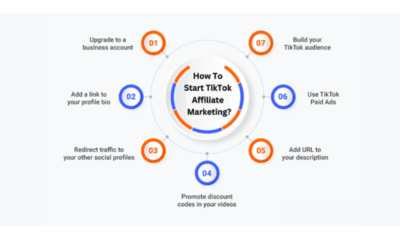Technology
Elevate Your Summer Wardrobe with Plus Size Denim Shorts

When it comes to warm-weather style, few items are as timeless and versatile as Plus Size Denim Shorts. These stylish shorts offer comfort, confidence, and endless outfit possibilities, making them a must-have for every closet. At Zinnia, you’ll find a wide range of plus-size options designed to complement your shape while keeping up with the latest trends.
For those looking for that perfect pair, check out Plus Size Denim Shorts from Zinnia, crafted for style and comfort. And don’t forget to explore other Plus Size Shorts on the site to mix and match with your favorite tops and accessories.
The Appeal of Plus Size Denim Shorts
1. Endless Styling Versatility
Plus Size Denim Shorts are incredibly versatile, allowing you to create casual looks for the beach, dress them up for a night out, or pair them with a blazer for a chic day ensemble. The simplicity of denim shorts makes them the perfect blank canvas for expressing personal style.
2. Comfort Without Compromise
One of the best things about Zinnia’s Plus Size Denim Shorts is that they are designed with comfort in mind. They feature soft, flexible materials that move with you, so you can feel comfortable and confident all day long.
Styling Ideas for Plus Size Denim Shorts
Pair with a Button-Down Shirt for Effortless Chic
To create a relaxed yet put-together look, pair your Plus Size Denim Shorts with a loose button-down shirt. This look is ideal for brunch, casual workdays, or a laid-back weekend vibe.
Add Layers for Transitional Seasons
Even though denim shorts are typically seen as summer staples, they can also be worn during spring or fall with layers. Throw on a cardigan or light jacket and pair them with ankle boots for a cozy and stylish ensemble that’s perfect for cooler days.
Opt for a Feminine Blouse for a Flattering Look
Create a soft, feminine look by pairing Plus Size Denim Shorts with a flowy blouse. The contrast between the structured shorts and a delicate top gives a balanced look that’s flattering and stylish.
Choosing the Right Fit for Your Plus Size Denim Shorts
Flattering Cuts for Curves
When shopping for Plus Size Denim Shorts, it’s essential to consider the cut that best flatters your figure. High-rise shorts are particularly flattering for curvier body types, as they emphasize the waist and create a balanced silhouette.
Explore Different Lengths for Different Occasions
Not all shorts are created equal. Some people prefer longer shorts for more coverage, while others might opt for shorter cuts to showcase their legs. With Zinnia’s variety of lengths, it’s easy to find a style that suits your taste and comfort level.
FAQs About Plus Size Denim Shorts
1. Can Plus Size Denim Shorts be dressed up?
Absolutely! You can elevate your Plus Size Denim Shorts by pairing them with a blazer, stylish heels, and elegant accessories. This look works well for events, dinner dates, or even casual gatherings.
2. Why should I choose Zinnia for my plus-size clothing?
Zinnia is committed to providing high-quality, stylish options for plus-size individuals. Their extensive selection of Plus Size Shorts and other items ensures you’ll find something that suits your style and body type.
3. How do I style Plus Size Denim Shorts in colder weather?
You can wear your Plus Size Denim Shorts year-round by layering with tights or leggings and pairing them with cozy sweaters or jackets. Add some ankle boots or sneakers, and you have a cute, weather-appropriate outfit.
Technology
What’s Containerization? Overview, Definition, Advantages, And Tools Logrocket Weblog
Despite its numerous benefits, containerization just isn’t with out challenges and limitations. Whereas a few of these could be mitigated or circumvented with applicable methods, others are inherent to the know-how. With the rise in recognition of containerization, a number of platforms have emerged, most notably Docker, developed by Docker Inc., and Kubernetes, originally launched by Google.
Database & Analytics Companies
Efficiently troubleshooting points and optimizing performance are key to making sure containers run smoothly and efficiently in production environments. Containerization additionally supports the rising shift towards microservices, enabling impartial scaling and management of software elements. Customers anticipate uninterrupted service, businesses require quicker innovation, and the know-how ecosystem is extra numerous than ever. Traditional methods of application deployment are simply not outfitted to handle these challenges with the required agility. Conventional monolithic purposes sometimes group all components of an application—frontend, backend, and database—into a single unit, usually resulting in challenges in scaling and maintenance. In this method, all application components—such because the consumer interface, enterprise logic, and database—were bundled into a single, unified codebase.
The portability of containers permits organizations to deploy the applying in any environment quickly. In addition, they pack all the dependencies, so that you don’t need to configure the app for various environments. Think About you are building a extremely big, complicated software, like an e-commerce website. With a microservices structure, you might have one service for the buying cart, one other service for the product catalog, another service for the fee gateway, and so on.
Containerization is all about packaging the necessities of an utility underneath growth in the form of a base image. This image can run in an isolated area (containers) on completely different systems. Most IT leaders are intrigued by this expertise as a end result of it is often used for deploying and operating a distributed app without having to use a Digital Machine (VM). Run, scale and manage containerized workloads across environments with flexibility, safety and efficiency by using IBM’s complete container platform.
Containers enhance safety by isolating applications and their dependencies. Even if one container is compromised, its isolation prevents the breach from affecting different containers or the host system. Additionally, containers may be configured with strict entry controls and runtime safety insurance policies, additional bolstering their safety posture. Digital machines offered a big improvement over physical servers on this regard.
The Benefits Of Containerization
Because containers are isolated from the underlying host system, builders may be confident that their applications will run constantly throughout completely different environments. This makes it simpler to deploy applications to totally different servers or cloud platforms without worrying about compatibility points or different problems. Container orchestration is a software technology that permits the automatic administration of containers.
- It would assist you to save tons of development time and value, not to mention sustaining the consistency of software code in all developer techniques across your utility infrastructure.
- All in all, Containers have become more essential as organizations shift to cloud-native architectures.
- Also, it allocates assets efficiently to keep away from useful resource wastage or deficiency.
- And a corporation that learns the means to adapt and reinvent itself turns into a guiding light for different businesses.
Conventional Software Program Development
Smaller images are faster to drag and deploy, which is very necessary in high-demand environments. Yes, this method definitely brings complexity, but the benefits outweigh the challenges. Moreover, the rapid improvements in container system administration, automation, and the robust industry/community assist for this method makes it a safer selection. So let Simform be your associate in your containerization adoption journey, and we’ll collectively construct a foundation for future development. Downtime means rather more than a brief power outage for mid-sized enterprises in today’s digital ecosystem. If a buyer can’t attain you as a outcome of your system is down, they will go elsewhere.
Containers are lightweight runtime executables which would possibly be both resource-efficient and moveable. With the rise of various deployment environments — particularly these associated to cloud computing — containerization has gained important reputation. A Docker container works by offering a self-contained setting for an application to run. It encapsulates the appliance’s code, runtime, system tools, libraries, and settings, isolating it from other processes on the host system.
Containers can run on completely different systems such as Linux, Windows, and macOS. Additionally, they work on physical servers, VMs, laptops, on-premise, public cloud, and so forth. A software program development and consulting firm serving shoppers from all industries within the Twin Cities metro, greater Minnesota and all through the country. Containerization is like placing all the ingredients and tools wanted to bake a cake into a single field. No matter the place you’re taking that box, you will have everything you should make the cake precisely the same means each time.

Containerization has turn into a preferred buzzword in the world of software growth and deployment. At its simplest, containerization is a course of that enables developers to package their applications and dependencies into light-weight, portable containers. These containers can then be simply deployed and run on any system that helps containerization, regardless of the underlying infrastructure. Kubernetes, initially developed by Google and is open supply, is the primary container orchestration platform. It automates the deployment, scaling, and management of containerized applications, making it essential for large-scale, complex environments. Kubernetes contains features corresponding to self-healing, horizontal scaling, and declarative configuration, all of which make applications run smoothly and efficiently.

A container runtime software is used to run containers and manage container lifecycle. It ensures that containers are started, stopped, and executed appropriately web developer. This isolation gives a steady environment as applications don’t intrude with each other. They are agile so the development cycle turns into quicker and the system stays up-to-date with minimal downtime.
Nonetheless, they lack a full OS and will not suit functions needing complete OS management. The Docker Ecosystem refers to the interconnected set of tools, platforms, and requirements that support the operation and use of Docker. It consists of Docker’s main parts, such as Docker Engine, Docker Compose, Docker Hub, and third-party instruments and integrations. Docker Hub serves as Docker’s cloud-based registry service, allowing customers to share and distribute container images.
When it involves container deployment, both Docker and Kubernetes shine, but in numerous ways. Docker, utilizing Docker Compose, can quickly run multi-container purposes on a single host, making it ideal for development environments. Nonetheless, for deploying containers across multiple hosts, Docker Swarm or Kubernetes is required.Kubernetes uses Deployment to explain the desired describe the benefits of containerisation state for operating containers together. It can handle the state of containers over time, guaranteeing that the current state all the time matches the desired state. It can roll out adjustments to containers, rollback to a previous deployment if one thing goes wrong, and scale up or down based on demand. There are numerous benefits to containerization, including portability, efficiency, scalability, consistency, and isolation.
Custom-made base container pictures are built after which composed as building blocks for more complicated use circumstances. Consistent use of tagging may help designate containers for use with specific hardware units, like GPU requirements or ARM-based architectures. Security scanning may be run to identify containers with software program packages which have safety vulnerabilities that have to be https://www.globalcloudteam.com/ patched.
Technology
Ghostwriter für Masterarbeit & Bachelorarbeit aus Berlin
Ein Buch schreiben lassen: So findest Du einen Ghostwriter
Unsere Plagiatsprüfung ist ein Zeugnis für unser Engagement für Exzellenz und unsere Entschlossenheit, Studierenden dabei zu helfen, Arbeiten vorzulegen, die Anerkennung und Respekt verdienen. Wenn Sie nach einem Partner suchen, der die Authentizität und Qualität Ihrer Hausarbeit sichert, steht ghostwriting365.de als Ihr verlässlicher Verbündeter bereit. Die Einreichung einer akademischen Arbeit ist ein bedeutender Schritt für jeden Studenten.
Der Baby-Sitter-Club
Unsere Ghostwriter von acadoo können gut formulieren und deshalb den Text so verfassen, dass er nicht nur inhaltlich, sondern auch stilistisch gut bis sehr gut wird. Vor allem dann, wenn die Auftraggeber bereits selbst im Beruf stehen, aber keine Zeit aufbringen, um die eigene Abschlussarbeit zu verfassen, ist es sinnvoll, die Arbeit einem ghostwriter seminararbeiten Ghostwriter zu überlassen. Dies schließt allerdings nicht aus, dass die Kunden ihr eigenes Wissen aus der Praxis mit einbringen können. Unter diesen Umständen können unsere Ghostwriter Vorlagen liefern, an denen Sie sich als Student orientieren können, die Probleme haben. Unsere Ghostwriter sind auch deshalb sinnvoll, weil viele Studenten im Anschluss an die Bologna-Reformen gestresst sind und deshalb nicht alle ihre Arbeiten selbst schreiben können. Mit durchschnittlich 50 zu schreibenden Seiten für eine Masterarbeit stehen die meisten Studierenden einer immensen Belastungsprobe gegenüber.
Da wir Dein gesprochenes Wort per Ton aufnehmen und Dein Buch danach auf Basis dieser Tondatei schreiben, wird sich Dein Buch auch nach Dir anhören. Wir verwenden die Worte, die Du gerne gebrauchst – nur eben in einer flüssigen und aufgeräumten Form. Durch die Arbeit mit vielen Autoren haben wir einen sehr strukturierten und planbaren Prozess für das Schreiben und Veröffentlichen von Büchern entwickelt.
Eine Ghostwriting Agenturen stellt eine besondere Dienstleistung dar, bei der erfahrene Autoren im Auftrag ihrer Kunden hochwertige Texte erstellen, ohne selbst als Urheber in Erscheinung zu treten. Diese Autoren arbeiten eng mit den Kunden zusammen, um deren Ideen und Vorgaben in qualitativ hochwertige, plagiatsfreie Texte umzusetzen. Wir sind eine seriöse Ghostwriting-Agentur und arbeiten seit Jahren mit erfahrenen Ghostwritern aus verschiedenen Fachgebieten. Unsere Kundenrezensionen bestätigen, dass das Erstellen einer Musterarbeit nach Ihren Vorgaben viel Geduld und fachliches Wissen erfordert. Ihre persönlichen Daten bleiben bei uns anonym, und der Ghostwriter arbeitet für uns, ohne zu wissen, dass die Arbeit für Sie ist. Wir gehen mit größter Sorgfalt vor und erstellen Ihr Meisterwerk einzigartig – nur für Sie!
.jpeg)
Nach dem Absenden des Formulars erfolgt der erste Informationsaustausch zu Ihrem Ghostwriting. Wir klären Ihre Fragen und besprechen sämtliche Details, um sicherzustellen, dass alle Ihre Anforderungen erfüllt werden. Bei ihnen handelt es sich um Akademiker, die mindestens einen sehr guten Masterabschluss vorweisen können. Von BWL über Rechtswissenschaften bis Medizin decken unsere Ghostwriter nahezu das gesamte akademische Fächerspektrum ab. Mit Professionalität und Erfahrung sind unsere handverlesenen und muttersprachlichen Ghostwriter jeder Herausforderung gewachsen – z. Dem Essay, der Hausarbeit, Seminararbeit, Bachelorarbeit Masterarbeit oder der Dissertation.
Bis dahin gab es keine Romane, sondern Historien, also Geschichten. Es gibt keine vorgegebene Seitenzahl, die einen Roman zum Roman macht. Im https://ghostwritingerfahrung.de/wisspro-erfahrungen/ Unterschied zu Geschichten, also etwa Kurzgeschichten, umfasst ein Roman aber meistens mindestens 100 Seiten Buchtext. Romane und Geschichten gehören zur Belletristik, der sogenannten schöngeistigen Literatur. Es steht ein einzelner Mensch oder eine Gruppe im Mittelpunkt, deren Schicksal erzählt wird.
- Der Aufbau einer Argumentationskette ist eine zusätzliche Herausforderung, der sich Studierende stellen müssen, die eine wissenschaftliche Facharbeit verfassen.
- Durch die sorgfältige Auswahl und korrekte Zitation von Quellen gewährleisten wir, dass jede Arbeit nicht nur inhaltlich überzeugt, sondern auch den strengen Anforderungen akademischer Integrität gerecht wird.
- Wir verstehen, dass jedes Projekt einzigartig ist, und schätzen die Individualität und die spezifischen Anforderungen unserer Kunden.
- Empfiehlt der Professor bestimmte wissenschaftliche Journals oder sind ihm bestimmte Autoren als theoretische Grundlage wichtig?
- Wir stehen Ihnen mit Rat und Tat zur Seite und sorgen dafür, dass Sie Ihre Abschlussarbeit erfolgreich und vor allem termingerecht abschließen.
Jetzt kostenlos registrieren!
Hier kommt ghostwriting365.de ins Spiel – Ihr vertrauenswürdiger Partner für erstklassiges Ghostwriting, der Ihr Publikum in seinen Bann ziehen wird. Seit meinem Masterabschluss im Wirtschaftsingenieurwesen bin ich als akademischer Coach und Ghostwriter tätig. Profitiere von meiner langjährigen Erfahrung und stelle mit meiner Hilfe sicher, dass auch Deine Abschlussarbeit ein voller Erfolg wird. Ein Coaching für die Abschlussarbeit hilft, um die allgemeine Vorgehensweise zu besprechen und offene Fragen zu beantworten. Mit der Erstellung eines hausarbeit ghostwriter Schritt-für-Schritt-Plans ist die eigenständige Anfertigung der wissenschaftlichen Arbeit kein Problem mehr.
Seriöse und besten Ghostwriter Agenturen im Vergleich: die ultimative Anleitung
Dadurch sammelt man wissenschaftliche Erfahrungen und eigene Forschungsgedanken. Der Studierende sollte dabei auch eigene Argumentation nachvollziehbar machen und sie auf das Papier bringen. Dadurch bekommt man eine klare Vorstellung von der richtigen Struktur des Textes. Man bekommt dabei eine nützliche Erfahrung, die in der Zukunft beim Erstellen einer Abschlussarbeit notwendig ist. In der Regel bekommt jeder Studierende vor dem Beginn der Arbeit einen Betreuer, der beim Verfassen der wissenschaftlichen Hausarbeit hilft. Es bedeutet, dass der Professor bei der Wahl einer passenden wissenschaftlichen Richtung, eines Themas und Methoden Hilfe leisten muss.
Dabei kann er leichter alle Hürden beim Erstellen der Arbeit überwinden.Nicht selten bekommt man ein festgelegtes Thema von dem Betreuer. Um über eine wissenschaftliche Hausarbeit mehr Informationen zu vermitteln, kann er ein Muster zeigen. Es ist keine schlechte Idee und es ist wirklich hilfreich, wenn man zum ersten Mal so einen Typ einer akademischen Arbeit erstellt. Suchen Sie nach einer Möglichkeit sich mit dem Verfassen eines akademischen Textes auseinanderzusetzen. Man bekommt dabei hilfreiche Erfahrung, wenn man die Karriere eines Wissenschaftlers plant.
Technology
Каким образом выигрывать в интернет-казино с привилегиями
Каким образом выигрывать в интернет-казино с привилегиями
Автоматы машины с любым годиком превращаются все более востребованными, предлагая неповторимые перспективы для развлечения и дохода. Нынешние онлайн казино с бонусами обеспечивают своим игрокам доступность к многочисленным автоматов, в которые можно запускать на ПК или смартфонах и планшетах.
Принцип работы азартных машин в виртуальном гэмблинге
Слоты представляют собой одними из самых известных развлечений в гемблинге. Понимание технических характеристик, механики и возможностей автоматов способствует получить больше наслаждения от игрового процесса и повысить шанс выиграть. Изучим, как действуют слоты в казино r7 и что следует учесть для добивания успешного исхода.
Основополагающие составляющие слотовых автоматов
Одним из главных элементов виртуальных-слотов, в основе которого создан механизм генерации вариаций, выступает генератор случайных чисел (ГСЧ). Каждую момент это создает рандомные значения, задающие итог нового вращения. Такое обеспечивает, что все сочетания на автоматическом экране автомата будут независимыми и случайными.
Следующей ключевой составляющей одноруких бандитов являются цилиндры и иконки, находящиеся на них. Слот машины содержат вариативное количество крутящихся катушек (чаще всего от трех до семи|от 3 до 7) и определённое число символов (обычно около 10 знаков|как правило, около 10 символов). Наборы из идентичных символов на включенных линии выигрыша устанавливают выигрыш и его величину.
Линии выигрыша являются расположенные по прямой позиции на роликах, на которых нужно расположить совпадающие иконки, образующие победную последовательность. Актуальные автоматы предлагают ряд линеек призов. В традиционных автоматах с тремя цилиндрами может быть всего одна линия, занимающая центральный ряд.
Геймплейная структура
Правила управления слотами в игорном заведении R7 определяется следующим образом:
- участники определяют размер бета и номинал монет (при наличии такой возможности);
- если потребуется нужды включают требуемое количество линеек, что задает общую сумму ставки для каждого вращения;
- активируют вращение цилиндров, кликая кнопку «Старт» для единичных раскруток или «Автозапуск» для автоматических.
Время спины прекратятся и катушки застынут, на них появится определенная сочетание из знаков, выработанная при помощи генератора случайных чисел. Если выпавшие по задействованных линиях изображения сходятся с комбинациями в таблице выигрышей, на баланс геймера автоматически начисляется соответствующая сумма.
Виды азартных аппаратов
На аутентичных ресурсах казино представлен обширный набор онлайн-слотов. В отличие с колеса фортуны, карточных и быстрых развлечений, слоты барабанного типа занимают большую часть предложения любого оператора. Несмотря на стандартный принцип работы подобных слотов, они кардинально разнятся в соответствии с вида игрового поля, механики и возможностей. Любые слоты допустимо разделить на 3 основные типы:
- Традиционные – включают три катушки и наименьшее объём линий выплат. Нередко в таких играх используются традиционные иконки, такие как фрукты, счастливые семерки и бубенцы. Такие аппараты включают несколько призовые возможности либо они не предусмотрены.
- Онлайн слоты – включают из пятерых или свыше барабанов и различных выплатных линий. Эти предоставляют разнообразную тематику, зачастую имеют конкретный сюжет, сложную визуализацию и анимацию. В этих автоматах присутствуют особые знаки и много дополнительных возможностей.
- Растущие автоматы – вдобавок к базовой выигрыша за набор символов из списка, они предоставляют шанс получить растущий джекпот. Выигрышный банк в этих аппаратах растет с любой совершенной ставкой. Он образуется из небольшого доли из любых бетсов, совершенных внутри него участниками. Нарастающие куш могут доходить до грандиозных величин.
В нынешних онлайн гэмблинг-платформах с бонусами самую значительную и широкую категорию включают слоты. Эти слоты разной тематики, с возможностью иметь статичные либо подвижные катушки, неповторимые механики и сотни линий выплат.
Почти каждые аппараты онлайн казино имеют пробную версию, которая позволяет безвозмездно испытывать слоты, анализировать их возврат средств, рискованность и другие параметры. Эта конкретная опция имеется и для мобильных устройств. Тестовый режим в онлайн-казино доступен без регистрации и депозита, так как пари во время сеанса осуществляются игровыми кредитами. Бесплатные игровые машины предназначены не только для новых игроков, которые желают изучить процедурой, правилами, механикой игры и символами. Их регулярно применяют опытные азартные игроки для тестирования распространенных тактик или создания личной тактики, испытания новых игр.
Методы игрового процесса в онлайн-слоты
Из-за того обстоятельства, что победа в автоматах создается полностью случайно, тактики, схемы и планы действий, которые применимы в карточных играх или рулетке, здесь не действенны. Тем не менее увеличить свои шансы на достижение джекпота и сделать процесс игры не только интересным, но и более результативным все же реально. Эксперты рекомендуют обратить внимание к следующим рекомендациям:
- Ищите аппарат с значительным RTP (теоретический процент возврата игроку) и подходящей нестабильностью, которая будет подходить к вашему способу игры.
- Определите игровой предел и следуйте этого. Распределите свой банкролл на более маленькие вклады, чтобы расширить время игры.
- Воспользуйтесь премиальными вариантами и спецпредложениями, предлагаемыми в казино Р7, чтобы приумножить свой банк и возможности выиграть.
Понимание принципа функционирования и механики игровых машин, а также использование тактик и ответственный подход к делу к процессу игры может предоставить необходимый опыт и увеличить вероятность выигрыша. Однако верный подбор аппарата с вниманием к его техно параметров, функций и дополнений обеспечит игру в казино более эффективной и увлекательной.
Как выбрать игровой автомат?
Верный выбор слота может оказаться определяющим аспектом при игре. В условиях огромного выбора категорий и тем важно осознавать, на что уделять внимание, чтобы расширить свои вероятность победы. Рассмотрим несколько ключевых факторов, которые необходимо рассматривать при выборе слота для азартной игры на деньги.
Важность RTP в интернет-слотах
Отдача пользователю (RTP) представляет собой ключевой характеристик, на которые стоит обращать внимание в процессе выбора аппарата. Она показывает, каков доля пари возвращён игроку в долгосрочной игре. С целью увеличивать возможность выигрыша, стоит подбирать аппараты с высоким RTP. Отличным индикатором является процент отдачи на показателе 96% и более. Насколько он больше, тем значительный приз может получить игрок игорного заведения при продолжительной сессии.
Волатильность автоматического аппарата
Этот параметр иногда именуют дисперсией ли степенью риска. Он решает, на которые призы вправе ожидать посетитель гэмблинг-клуба и как часто геймер будет их забирать. В игровых автоматах с значительной нестабильностью формируются более большие, но редкие победы. Во то время, когда игры с малой волатильностью предоставляют постоянные, но скромные призовые суммы. Игрокам следует подбирать ту волатильность, которая соответствует их манере игры и бюджету.
Дополнительные опции и особые знаки
Множество азартные автоматы имеют разнообразные призовые опции, включая такие, как бесплатные спины, множители, Scatter-символы и Вайлды. Указанные дополнения способны заметно поднять возможности на победу. Необходимо наперед изучить, что за бонусные функции доступны в понравившихся слотах, и подбирать те, которые могут оказаться максимально прибыльными.
Сумма ставки
До того как определиться с игровой автомат, обязательно нужно принимать во внимание и на минимальную и максимальную ставку, которые в нем разрешены. Данный интервал необходимо удовлетворять бюджету пользователя и его геймерским пристрастиям. В определённых автоматах допустимы небольшие вклады, в то время как в других нужны более высокие суммы для запуска всех линий выплат и бонусных функций.
Прогрессивные выигрыши
В случае, если клиент игрового клуба хочет выиграть значительный куш, стоит делать выбор в разделах, где собраны автоматы с накопительными джекпотами. Этих суперпризы всегда увеличиваются и способны достигать внушительных объемов. При таком следует помнить, что эти опции в большинстве случаев имеют более низкий RTP по сравнению с стандартным софтом.
Верный выбор слота – важный фактор, расширяющий шансы на значительный приз. Чтобы вынести выбор, важно рассматривать следующие параметры, как коэффициент возврата, изменчивость, тематика, призовые опции и размер ставки.
Подбор слота с наибольшими шансами на выигрыш может казаться непростой проблемой, особенно для начинающих. Однако, имея значимую сведения и применяя требуемые подходы, можно существенно улучшить свои шансы на выигрыш. Впоследствии в обзоре рассмотрим, как отыскать автомат с определенной волатильностью. А ещё ключевые условия, определяющие, какой аппарат с максимальной шансом даст крупный выигрыш и как находить лучшие игры в онлайн казино R7 casino.
Каким способом обнаружить игровые машины с умеренной волатильностью
Множество геймеров отдают предпочтение онлайн-игры с умеренным уровнем риска из-за регулярных, но скромных выигрышей. Если пользователь хочет, для того чтобы на роллах часто выпадали призовые комбинации, а геймплей длилась дольше, необходимо понимать, как находить такие автоматы. Каким образом же найти игровые автоматы с низкой волатильностью и как извлечь из них наибольшую прибыль? Для этой задачи следует следовать подобных рекомендаций:
- Ознакомьтесь с информацию о геймплее: значительное количество онлайн казино размещают описание с указанием технических параметров непосредственно на странице с аппаратом. Также найти градус риска можно в справочном разделе самого игрового аппарата (обычно запускается значком «i»).
- Попробуйте демо-версии приглянувшихся игр, дабы на деле установить, как часто выпадают и каков их величина.
- Просмотрите с обзорами и оценками: многие профильные сайты, дневники и форумы предлагают характеристики различных слотов.
- Найдите выход интересующего игрового автомата на веб-сайте разработчика. Большинство провайдеров представляют короткие обзоры своей продуктов, характеристики и технические параметры.
Советуется находить игровые автоматы сразу с несколькими привилегиями. Слоты с умеренной изменчивостью обычно оборудованы призовыми раундами, фри-спинами, коэффициентами и прочими экстра функциями, которые повышают вероятность выигрыша.
Достоинства игровых автоматов с низкой вариативностью
Регулярные победы – единственная из главных плюсов игровых машин с минимальным уровнем риска. Это превращает процедуру более увлекательным. Такие форматы ещё выделяются более длительной игровой сессией. Из-за регулярным выигрышам можно крутить катушки продолжительнее, не опустошая мгновенно свой банкролл.
Автоматы с низкой нестабильностью отличаются сниженным рискованностью, так как для выигрыша не требуются большие ставки. Среди наиболее известных кейсов:
- Starburst от NetEnt – традиционная игровой автомат с растущими Wild-символами и высококачественной визуальными эффектами.
- 40 Пылающих Hot – фрукты автомат, разработанный EGT с Диким символом, Скаттером и прогрессивным кушом.
- Кено Universe от Amusnet – известная развлечение с максимальным джекпотом х10000 от ставки.
Игровые аппараты с умеренной изменчивостью повышают вероятность на постоянные победы. Их часто выбирают новички и геймеры с скромным бюджетом.
Что подразумевает значит высокая волатильность в игровых автоматах?
Большой показатель изменчивости в игровом автомате указывает, что геймера предстоят нечастые, но крупные джекпоты. Данное также свидетельствует о том, что игрок может играть в течение затяжного времени без формирования наградных комбинаций на линиях, но когда на барабанах появится победа, он может быть очень крупным.
Эти варианты более опасны, так как требуют временных ресурсов и крупного банкролла. У геймеров с маленьким банком финансы могут закончиться прежде, чем они получат приличную доход. Хайроллеры зачастую выбирают слоты с высокой изменчивостью из-за возможности значительных выплат.
Образцы игровых автоматов с высокой нестабильностью в виртуальном казино R7:
- Starlight Принцесса – цепной игровой автомат от Pragmatic Play с туром фри вращений, умножителями и значительным выигрышным потенциалом.
- Мертвый или Alive 2 – веб слот от NetEnt, оборудованный клейкими дикими знаками и растущими множителями выигрышей.
- Bonanza Megaways от BTG – слот, предоставляющий 117 649 способов выиграть и может увеличить бет в 26 000 раз.
Вдобавок к высокого степени риска, эти игры придают азарт и увеличивают возможность получения существенных вознаграждений. Эти ценят опытные игроки, хайроллеры и участники, которые ради значительных денежных наград готовы на продолжительным играм.
Наиболее подходящее время для игрового процесса в онлайн-слоты.
Влиять на игровой процесс и даже на вероятность победы может не только правильный подбор слота, но и период визита онлайн казино. Хотя на обстоятельство, что игровые машины работают на фундаменте ГСЧ, есть некоторые аспекты, которые могут обозначить определенное момент более подходящим для кручения катушек.
Геймерские наклонности и время нагрузки
По советам специалистов и искушенных игроков, следует сторониться периодов времени наибольшей активности в виртуальных казино. Оные обычно случаются на вечерние время в рабочие дни и выходные дни, когда большинство людей свободны. В данные периоды объем игроков на платформе значительно выше, чем в другие времена суток, что подразумевает большую борьбу за накопительные выигрыши.
Торжественные даты и особые мероприятия могут оказаться удачным временем для запуска барабанов, так как многие онлайн казино предлагают специальные предложения и специфические бонусы. Следует использовать этими вариантами, чтобы приумножить свой банкролл и вероятность выигрыша.
Наилучшее период для растущих джекпотов
Прогрессивные выигрыши увеличиваются с каждой сделанной ставом и часто поднимаются до больших сумм, прежде чем они будут получены. Таким образом необходимо часто следить за увеличением джекпота и стартовать ставить деньги, когда его размер достиг наивысшей точки. Именно в этот отрезок времени вероятность добычи джекпота может быть выше.
Личный расписание и комфорт
Сыграть с состоянием усталости нельзя. Телесное и душевное положение игрока также значимо. Поэтому вращать катушки предпочтительнее в тот момент, если пользователь отдохнул и внимателен. Данное даст возможность делать более аргументированные решения. Вдобавок не стоит участвовать, если присутствуют какие-то мешающие моменты.
Большинство игорных заведений предлагают суточные и недельные бонусы, промоакции, кэшбэк, проводят лотереи. Следует эффективно применять предоставленные предложения. Такое предоставит шанс максимально эффективно распределить бонусные ресурсы и безвозмездные спины.
Для того чтобы подобрать наиболее подходящее период для игрового процесса в виртуальные автоматы, нужно учитывать разнообразные факторы: время наибольшей активности, специальные мероприятия, увеличение джекпота и т.д. Только так удастся оптимизировать геймплей и обеспечить вероятность выигрыша предельными.
-

 Health10 months ago
Health10 months agoDiscover ://vital-mag.net Blog: Expert Tips for Total Wellness
-

 Business12 months ago
Business12 months agoTikTok Affiliate Marketing | A Complete Guide for Marketers and Creators |
-

 Home and Gardening11 months ago
Home and Gardening11 months agoSunset Gardens Apartments: Complete Guide
-

 Health11 months ago
Health11 months ago7 Day Juice Fast Weight Loss Results: Expectations & Strategies
-

 Life style11 months ago
Life style11 months agoWhy i stopped eyelash extensions?
-

 entertainment5 months ago
entertainment5 months agoTop 7 Occasions to Send a Thank You Card and Why They Matter
-

 entertainment5 months ago
entertainment5 months agoCelebrate Life: The Pleasure in Sending Birthday Cards
-

 Business11 months ago
Business11 months agoSecret Strategies of Competent Trading Companies
